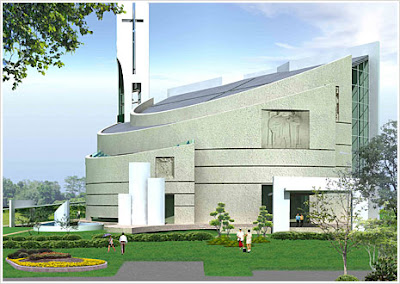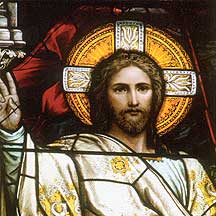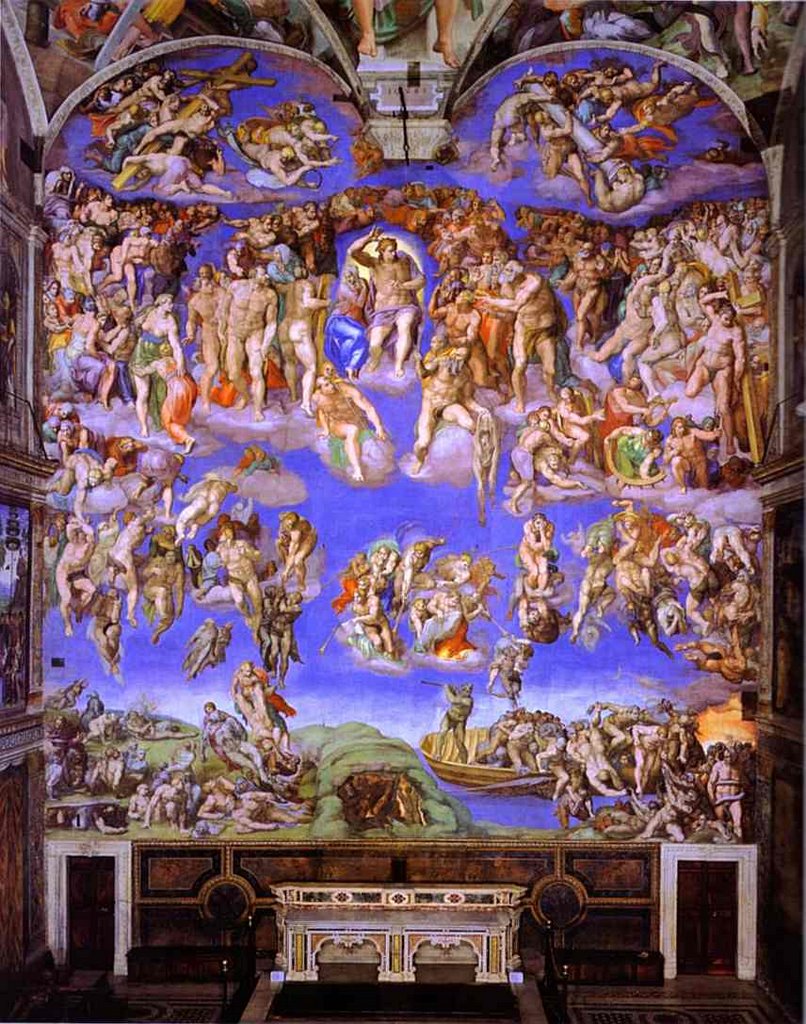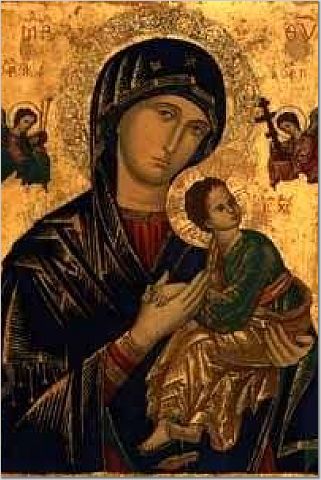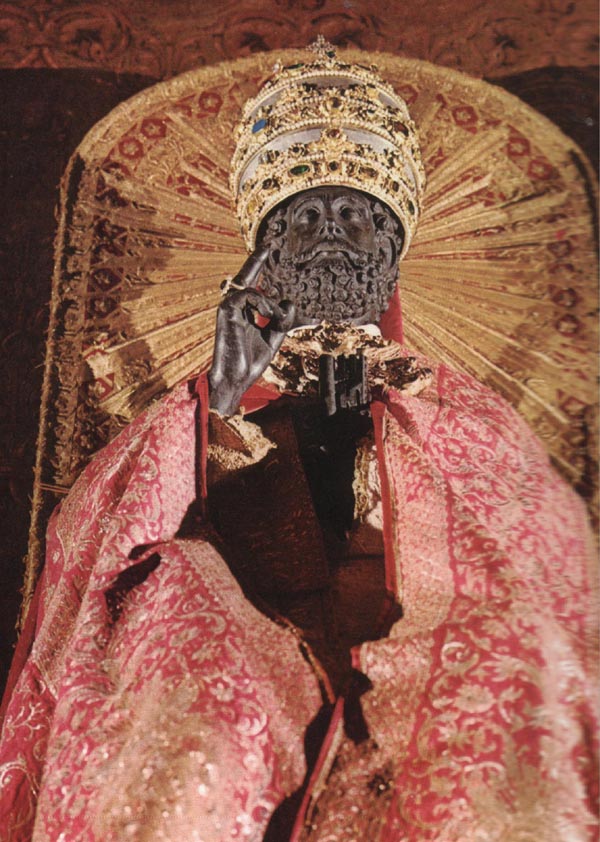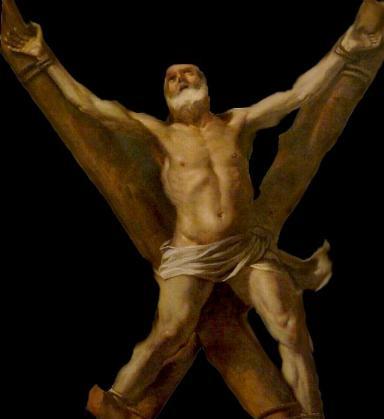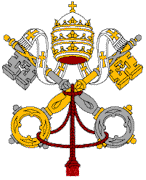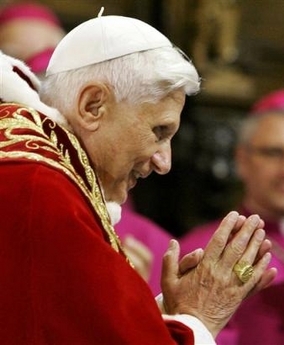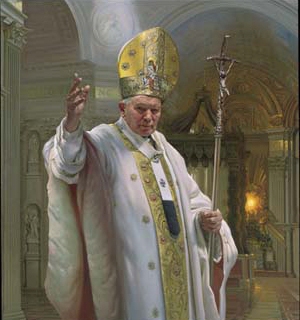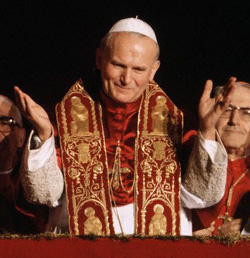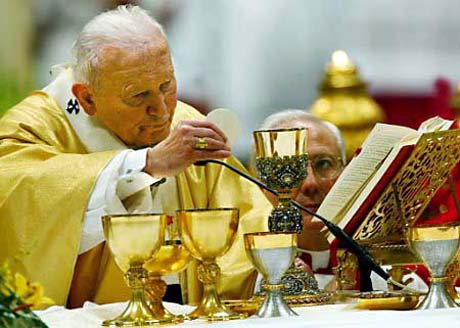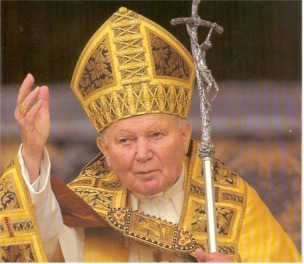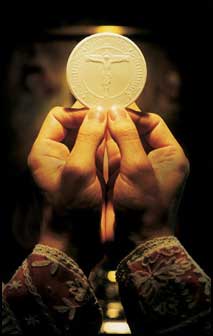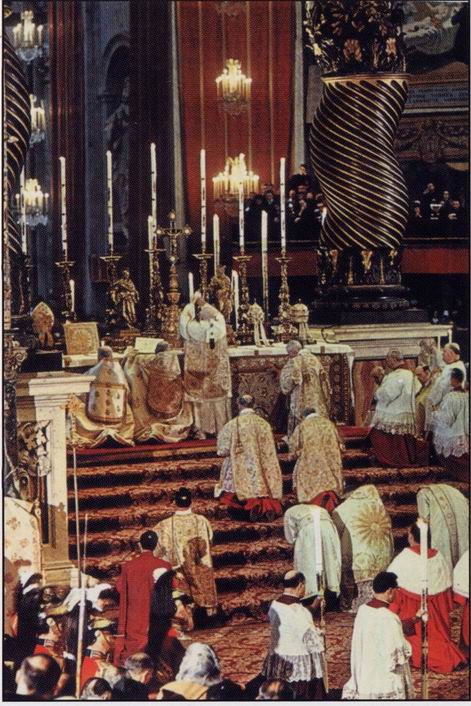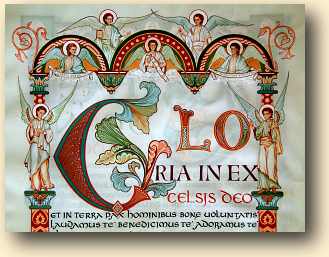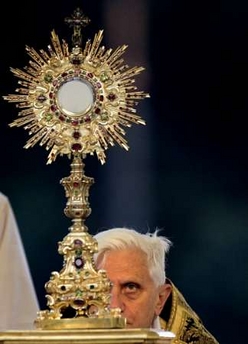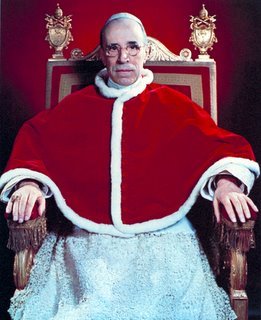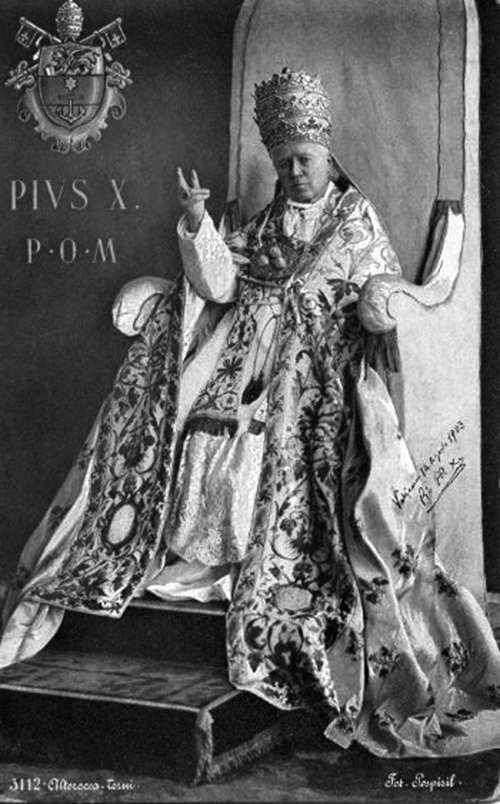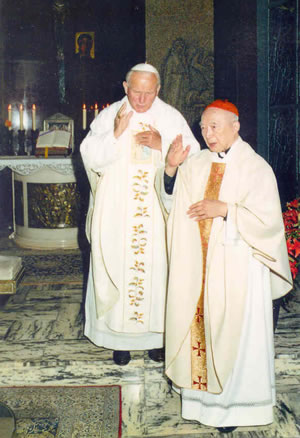
VATICAN CITY, 28 JUN 2008 (VIS) - At 6 p.m. today in the basilica of St. Paul's Outside-the-Walls, Benedict XVI presided at the celebration of first Vespers for the Solemnity of Sts. Peter and Paul Apostles, which also marked the opening of the Pauline Year. Among those participating in the ceremony were the Ecumenical Patriarch Bartholomew I and representatives from other Churches and Christian communities.
The Holy Father, Bartholomew I, delegates from other Christian confessions, and monks from the abbey of St. Paul's Outside-the-Walls walked in procession to the portico of the basilica where, before the statue of the saint, the Pope lit a candle from a brazier which will remain burning for the entire Pauline year. After the Pope the ecumenical patriarch and the representative of the primate of the Anglican communion also lit candles. The procession then entered the basilica through the Pauline Door.
"We are gathered around the tomb of St. Paul, who was born 2000 years ago in Tarsus in Cilicia, in modern-day Turkey", said the Pope in his homily. "For us, Paul is not a figure of the past whom we recall with veneration. He is also our master, the Apostle and announcer of Jesus Christ to us too. Hence we are gathered here not to reflect upon a past history which has been left irrevocably behind. Paul wishes to speak to us today". Thus, the Pope explained, the Pauline Year serves "to listen to him and to learn from him, as from a master, the faith and the truth in which the reasons for the unity of Christ's disciples are rooted".
"It is of great joy to me", said the Holy Father, "that the opening of the Pauline year should have a particularly ecumenical character, thanks to the presence of many delegates and representatives of Churches and ecclesial communities, whom I welcome with all my heart". They include "the Patriarch Bartholomew I, ... fraternal delegates of Churches that have especially close ties to the Apostle Paul (Jerusalem, Antioch, Cyprus, Greece) and that form the geographical setting of the Apostle's life before his arrival in Rome, ... and brethren from various Churches and ecclesial communities of East and West".
"We are gathered here to ask ourselves about the great Apostle of the Gentiles. We ask ourselves not just who Paul was, but above all who he is. ... His faith was the experience of being loved by Jesus Christ with an entirely personal love; it was an awareness of the fact that Christ faced death not for some unidentified cause, but for love of him - of Paul - and that, being Risen, He loves him still. Christ gave Himself for him. ... His faith was not a theory, an opinion on God and on the world, His faith was the impact of God's love on his heart. And so this faith was love for Jesus Christ".
The Holy Father then recalled how many people see Paul as "combative" noting that, "in fact, there was no lack of disputes on the Apostle's path. He did not seek superficial harmony. ... The truth was too great for him to be disposed to sacrifice it in the name of exterior success. The truth he experienced in his encounter with the Risen One was, for him, well worth struggle, persecution and suffering. But his deepest motivations were the fact that he was loved by Jesus Christ and his desire to transmit this love to others. ... Only on this basis can the fundamental concepts of his message be understood".
Focusing then on one of Paul's "keywords: freedom", the Pope explained that "Paul, as a man loved by God, was free. ... This love was the 'law' of his life and, thus, it was the freedom of his life". Paul "spoke and acted moved by the responsibility of love. Freedom and responsibility are inseparably united. ... Those who love Christ as Paul loved Him can truly do as they please, because their love is united to the will of Christ and thus to the will of God; because their will is anchored in truth and because their will is not simply their own will - the decisions of an autonomous 'I' - but is integrated into the freedom of God".
The Pope then went on to consider Paul's conversion on the road to Damascus, when the Risen Christ proclaimed "I am Jesus Whom you are persecuting". By "persecuting the Church", said Benedict XVI, "Paul was persecuting Jesus" Who "identifies Himself with the Church as one single subject". This exclamation which transformed Saul's life "contains the entire doctrine of the Church as the Body of Christ. Christ has not withdrawn to heaven, leaving a group of followers on earth to pursue 'His cause'. the Church is not an association that seeks to promote a particular cause" but "the person of Jesus Christ Who, even when Risen remained as 'flesh'. ... He has a body. He is personally present in His Church".
"Through all this we glimpse the Eucharistic mystery, in which Christ continually gives His Body and makes us His Body", said the Pope and, noting with regret the laceration of this Body, asked Christ to overcome all divisions so that union "may once again become reality".
Finally, the Holy Father recalled Paul's words to Timothy shortly before his heath: "Join with me in suffering for the Gospel". The Pope went on to note that the "duty of announcement and the call to suffer for Christ are inseparable. ... In a world where lies are so powerful, truth is paid with suffering. Those who wish to avoid suffering, to keep it away, keep away life itself and its greatness; they cannot be servants of truth or servants of the faith. ... Where there is nothing worth suffering for, life itself loses value. The Eucharist - the focus of our being Christian - is founded on Jesus' sacrifice for us, it was born of the suffering of love".
"It is of this self-giving love that we live. It gives us the courage and the strength to suffer with Christ and for Him in this world, knowing that this is the way our lives become great, and mature, and true".
![[Unam Sanctam]](https://blogger.googleusercontent.com/img/b/R29vZ2xl/AVvXsEiymQ2adTjpZ1ABhPBbBBquiPCxeQrc4Jy_97vOikT0wGQeJleriiXQy6ebnb0jrYe-TfvcK77txStB4aIwVAdD41ZdMkVfNtFGC0JX6LBV9B8mfeRZaIAM7Sj-011ag3DiKQzv/s1600/headerdivinemercy.jpg)


























